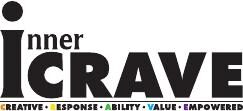Rudolph’s bright, illuminated nose led Santa’s sleigh through the fog to accomplish its mission of delivering toys all around the world. Modern day Rudolphs in the business world tend to go unnoticed until their unique and unconventional thinking is needed.
- Rudolph Factor is a term referring to a small percentage of every company’s highly creative and unconventional thinkers.
- Learn to identify, nurture, and leverage their Rudolph Factor.
- They are today’s leaders of innovation and change, and hence, dominate their respective fields with this unique and sustainable competitive advantage.
Consider the four modes of operation:
- Tactical / Operational
- Facilitative / Managerial
- Creative / Innovative
- Visionary / Strategic
The two most important tools Rudolphs are given include a voice (empowerment) and the ability to implement the ideas that improve organizational conditions.
- Consider whether your Rudolphs are checking their red nose at the door
- Rudolph Cultures are based on values rather than rules.
- Every organization, large and small, has a small but might herd of Rudolphs.
- Open you mind, identify unmet needs, and have processes in place to nurture creative and innovative thinking from Rudolphs and non-Rudolphs.
- When responsibility and ownership has been shifted to employees, organizational greatness is a distinct possibility.
We define culture as the manifestation of every exchange and interaction every day between every person (including workers, managers, executives, suppliers, and customers) affiliated with an organization.
- An organization’s culture is not just the responsibility of management, it belongs to everyone.

Re-source: Reorganize
Four pillars of Organizational Greatness
- Establishing a Rudolph Culture
- Redefining leadership as “connecting people to their future”
- Developing a Corporate Constitution – an unwavering institutional memory and infrastructure that does not change no matter who is leading or what external circumstances are presented.
- Creating an Aligned Reward System – consonant with different types of employees (worker, manager, Rudolph, or executive) and in alignment with the other three pillars.
Recognize that organizational greatness is not dependent on how strong each pillar is individually. Greatness is dependent on how well the four pillars hold up the structure – in other words, how well each pillar is integrated with the other three.
An organization’s competitive advantage criteria are comprised of nontangible features that are more people-based rather than product.
- 10 percent of an organization is its Rudolph Factor – people who can shine the light exactly where a company needs to go to achieve higher levels of innovation.
craving and resource from “The Rudolph Factor” by Cyndi Laurin and Craig Morningstar
